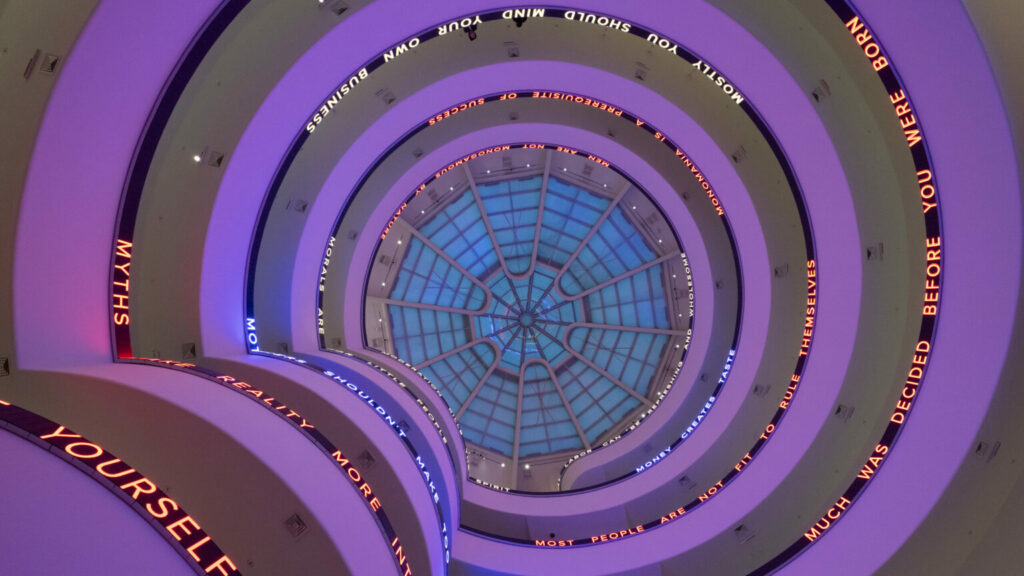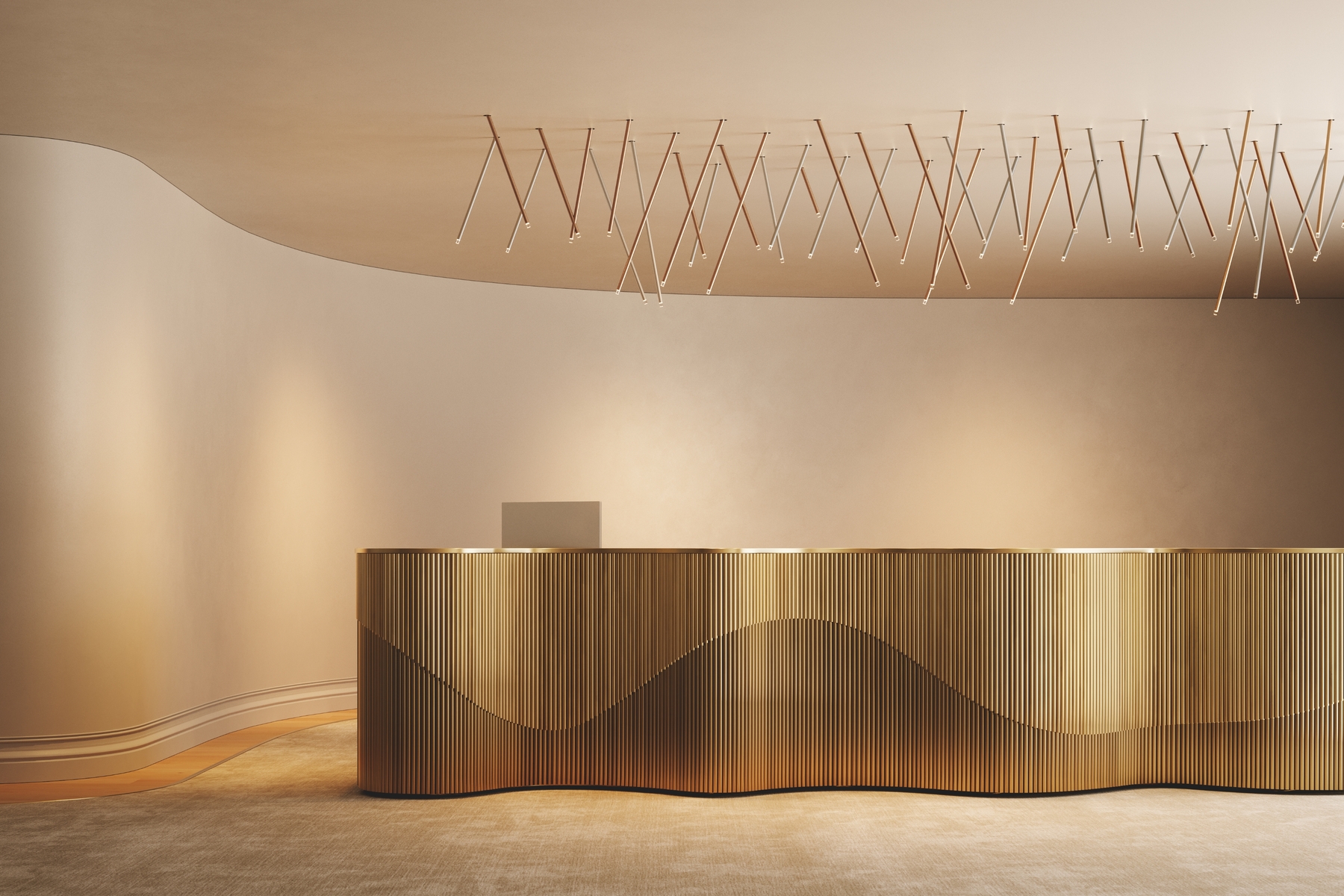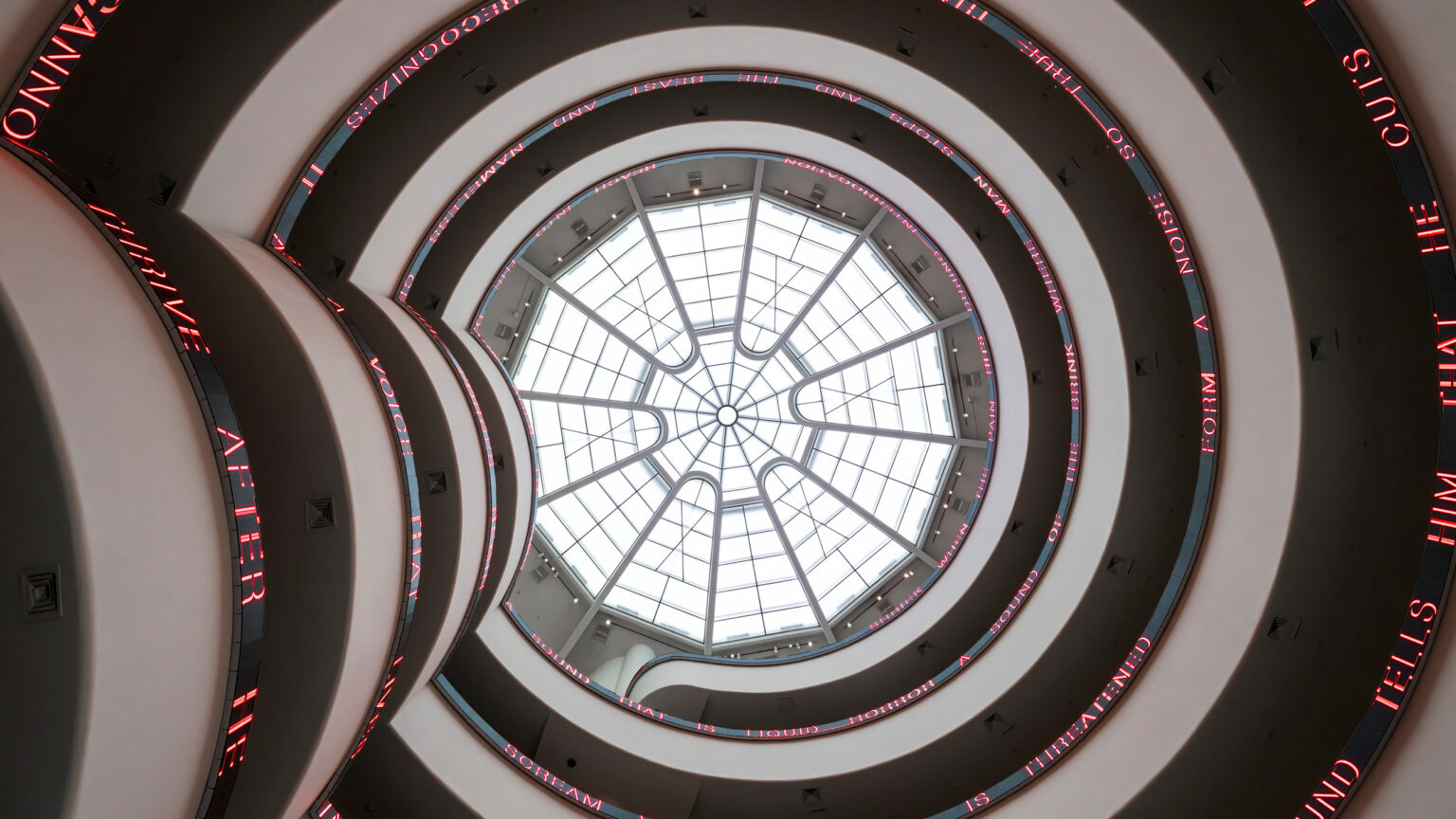Almost thirty-five years ago, Jenny Holzer created a spiraling LED display for her Guggenheim Museum exhibition. The LED sign—blinking while changing colors, fonts, and special effects—was the longest in the world at the time and is considered a masterpiece of text-based art.
Open today through September 29, 2024, the Guggenheim presents the solo exhibition Jenny Holzer: Light Line, featuring a reimagining of Holzer’s 1989 landmark artwork. Holzer has treated the entire museum as an installation, placing pieces in unexpected spaces, such as outdoor planters and a restroom, to echo chance encounters with her work on city streets.
Holzer’s voice is vital and incisive, and her work, whether on posters, electronic signs, stone benches, or paintings, explores some of the most pressing issues of our time, from climate justice to women’s rights, from corruption to war.
The new manifestation of Holzer’s electronic sign, Installation for the Solomon R. Guggenheim Museum (1989/2024), transforms the building with an updated and expanded display of scrolling texts, featuring language from her iconic series, such as Truisms and Inflammatory Essays. Taking up three revolutions of the Frank Lloyd Wright-designed rotunda in the 1989 exhibition, the new installation climbs all six ramps up to the building’s oculus, realizing the artist’s original vision.

Developed in close collaboration with the artist and her studio, the new sign was the subject of an ambitious research project. Guggenheim conservators reverse-engineered the 1989 LED hardware and computer program, which helped inform the new manifestation. This investigation documents future variability and technology upgrades and contributes to scholarship and methodologies for the preservation of technology-based artworks.
Light Line also features a selection of Holzer’s works from the 1970s to the present day, including paintings, works on paper, plaques, and stone pieces. Lee Quiñones, one of the originators of street art and a longtime collaborator of Holzer’s, has graffitied the walls of the museum’s High Gallery over the artist’s colorful Inflammatory Essays posters.
Marking the opening of the exhibition, Holzer’s For the Guggenheim will be displayed on the building’s facade every evening at sundown through May 20. The light projection—first commissioned by the museum in 2008—will illuminate the architecture with poems and eyewitness accounts that speak to the necessity of peace.
An artist’s book, titled TRACE, has been published on the occasion of the exhibition. Each page features a phrase chosen by Holzer from three of her text series—Truisms, Living, and Survival—in the form of preparatory drawings she has used for many years to create her iconic stone benches. In addition, visitors can engage with the exhibition through dedicated accessibility programs and content in the Guggenheim’s comprehensive digital guide.
This solo exhibition reflects how Holzer’s use of the written word throughout her career has long captivated audiences around the world. The messaging is timely and offers audiences the opportunity to encounter the extraordinary, the political, the mundane, and the provocative through the artist’s pioneering approach to technology and language.








